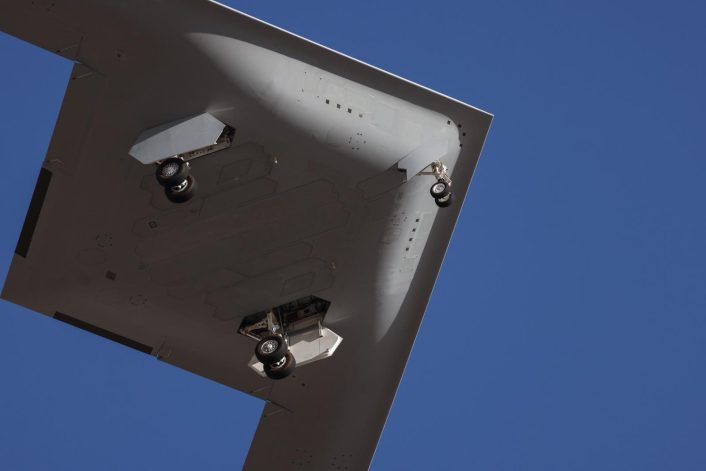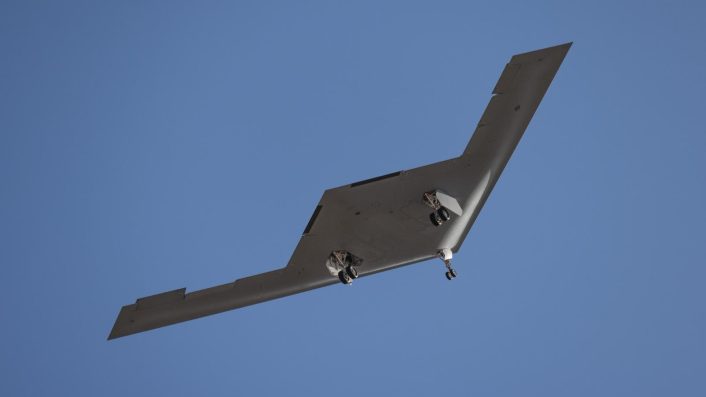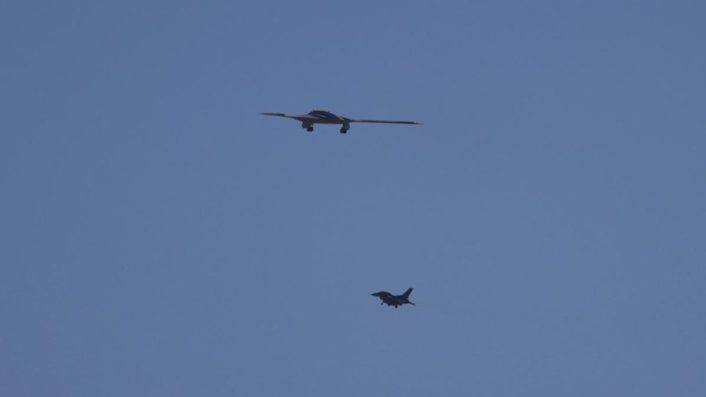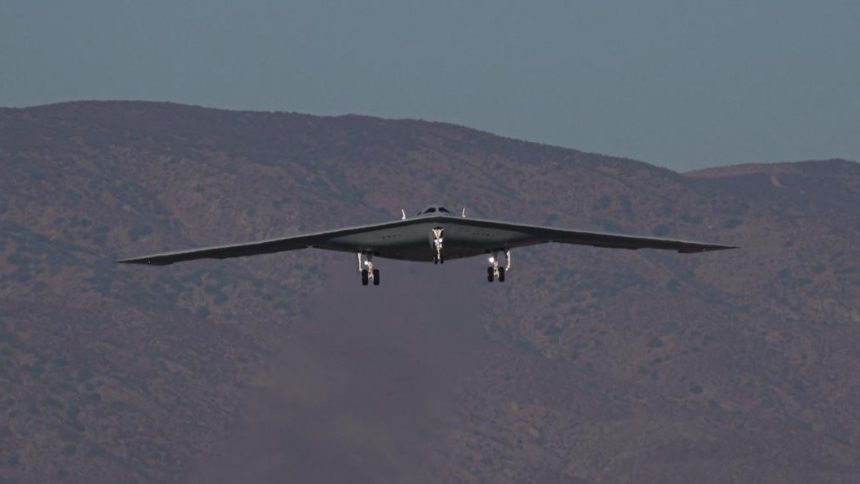The second B-21 conducted its maiden flight and will now join the first one, which has been flying since 2023 at Edwards Air Force Base.
The second B-21 Raider stealth bomber has flown for the first time from the Air Force Plant 42 Palmdale, California, on Sep. 11, 2025, with a U.S. Air Force F-16 escorting it in close formation acting as a chase aircraft. Similarly to the first one, this B-21 flew to Edwards Air Force Base, where it will join the flight testing effort.
The aircraft is the fourth B-21 overall, as the current fleet now includes two aircraft dedicated to ground testing, designated G-1 and G-2, and the two flight test aircraft, designated T-1 and T-2. Airframe T-1 flew for the first time on Nov. 10, 2023, while it is unclear when G-1 and G-2 joined the fleet.
Visualizza questo post su Instagram
The first flight of T-2 was already expected by the end of the year, with recent comments by U.S. Air Force officials saying it would fly soon. Including T-2, it was reported that six B-21 airframes were in various stages of production at Plant 42.
The Secretary of the Air Force Troy Meink said the second B-21 allows the test campaign to accelerate as the service advances into mission system and weapons evaluations. This was echoed by Northrop Grumman. The company also mentioned the introduction of an enhanced software package which will demonstrate the abilityl deliver seamless upgrades to the B-21 fleet.
The second B-21 Raider has taken flight! With two B-21s now flying, our test campaign accelerates.
We’re advancing mission system & weapons evaluations to ensure this aircraft delivers unmatched strategic deterrence and combat power for the @usairforce. #B21Raider #AirPower
— Office of the Secretary of the Air Force (@SecAFOfficial) September 11, 2025
As testing progresses, the Air Force and Northrop Grumman are preparing to operate and maintain the B-21. Northrop Grumman says it is developing comprehensive training capabilities – to include high-fidelity, full-motion simulators, immersive labs and virtual spaces – as part of the Air Force’s Formal Training Unit at Ellsworth AFB, South Dakota. These will include training content and devices for future pilots, weapons loaders, maintainers and support personnel.

Second Flying B-21
Compared to the maiden flight of the first B-21, the second aircraft was not equipped with the air data probe and trailing cone which are usually mounted on prototype aircraft as part of initial flight testing. The trailing cone is usually a nylon cable with a stabilizing cone deployed in flight, generally 1 to 1.5 times the wing span length – or about 50 meters – behind the aircraft to measure the ambient atmospheric pressure (static pressure) precisely, in the “free-stream air-flow” outside the disrupted air-flow generated by the aircraft – a key parameter for the pilots.
With the first B-21 flying for almost two years, Northrop Grumman and the Air Force have possibly collected enough data and did not require the installation of this equipment on the aircraft. The removal of this equipment will further reduce the differences from the final configuration of the new bomber.
However, some traits of standard initial flight testing still remain, such as the flight in landing configuration and the chase aircraft. The flight in a fixed configuration has the goal to minimize risks by reducing the number of complex systems to be used, while the safety chase, as the name hints, provides another safety layer with an external viewpoint of the aircraft throughout the flight and assistance in case of problems.

Contrary to the first B-21, the second one has not received a nickname before the first flight. As we reported at the time, on the first B-21’s nose gear door there was a logo showing the multi-headed dog Cerberus of the Greek mythology. Additionally, the second B-21 did not feature the stylized Northrop Grumman Flight test badge, and the serial painted on the nose landing gear door.
The B-21 Raider
The B-21 Raider is the centerpiece of the U.S. Air Force’s Long Range Strike Bomber program, developed by Northrop Grumman to provide a survivable, flexible, and affordable platform capable of penetrating advanced defenses. It is the first new American bomber introduced in over three decades, marking a generational leap intended to secure U.S. global strike capability well into the future.
The aircraft is dual-capable, designed to deliver both conventional and nuclear weapons, and will eventually replace the B-1B Lancer and B-2 Spirit fleets while complementing the upgraded B-52J Stratofortress. The Raider is expected to form the backbone of the Air Force’s bomber force for decades to come.

The U.S. Air Force has currently 100 B-21s on order. Northrop Grumman was awarded the second low-rate initial production contract for the Raider late in 2024 and is now scaling the production to meet the service’s timeline, although recent reports have suggested that production is under budget and ahead of schedule.
Visually, the B-21 shares the iconic flying-wing configuration of the B-2, but closer examination reveals a series of refinements that reflect both advances in stealth technology and lessons learned from earlier programs. Among the most noticeable features are its blended, flush-mounted engine inlets designed to reduce radar cross-section, narrower and arched cockpit side windows and the main landing gear adopting a simpler two-wheel configuration.
Northrop Grumman and the Air Force have emphasized that the most significant innovations are embedded in the aircraft’s systems and materials rather than in radical aerodynamic changes. The Raider incorporates a new generation of low-observable coatings and composite materials intended to improve durability and reduce the extensive maintenance historically associated with stealth aircraft.
Its avionics are built on an open-systems architecture, allowing new sensors, weapons, and mission systems to be integrated more quickly and cost-effectively than in past platforms. The aircraft is also designed from the outset to operate as part of a larger networked force, capable of sharing data with other platforms and potentially controlling unmanned systems in future concepts of operations.
Thank you to Jarod Hamilton for capturing this historic event and sharing the photos with us. Be sure to check out and follow him on X and Instagram.









